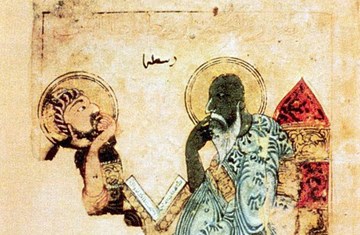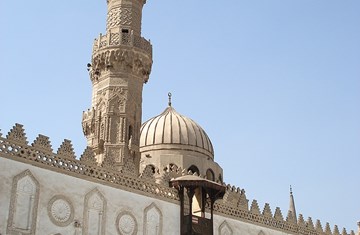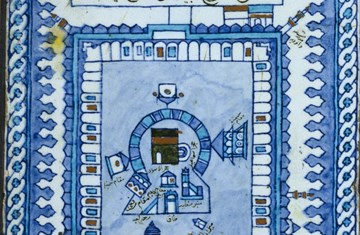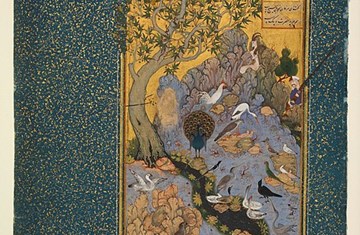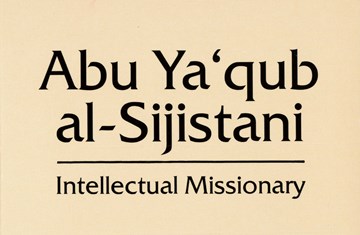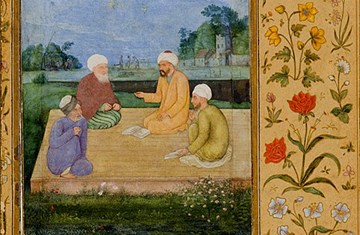Ceramics
Keywords: Chinese wares, “fritware”, lustre-painted ceramics, Seljuk, mina’i, Shahnama, Misr, glazed ceramics, khazaf, fakhkhar, ghadar, sini, slip-painted pottery, Islamic glazed ware, Iraqi potters, Iznik wares.
Around the year 1135 CE, a merchant from Aden wrote the following letter to his counterpart in Egypt: “Please buy me six painted platters, made in Misr [Old Cairo]. They should be of middle size, neither very large nor very small; and twenty regular bowls and forty small ones. All should be painted, and their figures and colours should be different.”
The history of ceramic production in the medieval Muslim world, from the period of the Umayyads in the seventh century CE to the Ottomans and Safavids in the seventeenth century CE, attests to the superior creativity and experimentation of Muslim potters, demonstrated through their innovations in shape and design, clay recipes, glazes, and techniques of decoration. Glazed ceramics represent a very small percentage of the total ceramic assemblage produced in the medieval Muslim world.
Authors

Professor Azim Nanji
Professor Azim Nanji serves currently as Special Advisor to the Provost at the Aga Khan University. Most recently he served as Senior Associate Director of the Abbasi Program in Islamic Studies at Stanford University 2008-2010 and also lectured on Islam in the Department of Religious Studies. He was previously the of Director of the Institute of Ismaili Studies from 1998 - 2008. Prior to this, he was Professor and Chair of the Department of Religion at the University of Florida and has held academic and administrative appointments at various American and Canadian universities.
Professor Nanji has authored, co-authored and edited several books including: The Nizari Ismaili Tradition (1976), The Muslim Almanac (1996), Mapping Islamic Studies (1997) and The Historical Atlas of Islam (with M. Ruthven) (2004) and The Dictionary of Islam (with Razia Nanji), Penguin 2008. In addition, he has contributed numerous shorter studies and articles on religion, Islam and Ismailism in journals and collective volumes including The Encyclopaedia of Islam, Encyclopaedia Iranica, Oxford Encyclopaedia of the Modern Islamic World, and A Companion to Ethics. He was the Associate Editor for the revised Second Edition of The Encyclopaedia of Religion. In 1988 he was Margaret Gest Visiting Professor at Haverford College and a Visiting Professor at Stanford University in 2004, where he was also invited to give the Baccalaureate Address in 1995. He has also lectured widely at international conferences all over the world.
Professor Nanji has served as Co-Chair of the Islam section at the American Academy of Religion and on the Editorial Board of the Academy’s Journal. He has also been a member of the Philanthropy Committee of the Council on Foundations and has been the recipient of awards from the Rockefeller Foundation, the Canada Council, and the National Endowment for Humanities. In 2004 he gave the Birks Lecture at McGill University.
Within the Aga Khan Development Network, Professor Nanji has served as a Member of the Steering Committee and Master Jury of the Aga Khan Award for Architecture, Task Force Member for the Institute for the Study of Muslim Civilisations (AKU-ISMC) and Vice Chair of the Madrasa-based Early Childhood Education Programme in East-Africa.

Professor Zulfikar Hirji
Zulfikar Hirji is an Anthropologist and Social Historian of Muslim Societies and Cultures. He is currently Associate Professor of Anthropology at York University, Toronto. He was formerly a Research Associate at The Institute of Ismaili Studies, London, and Junior Research Fellow at Wolfson College, Oxford.

